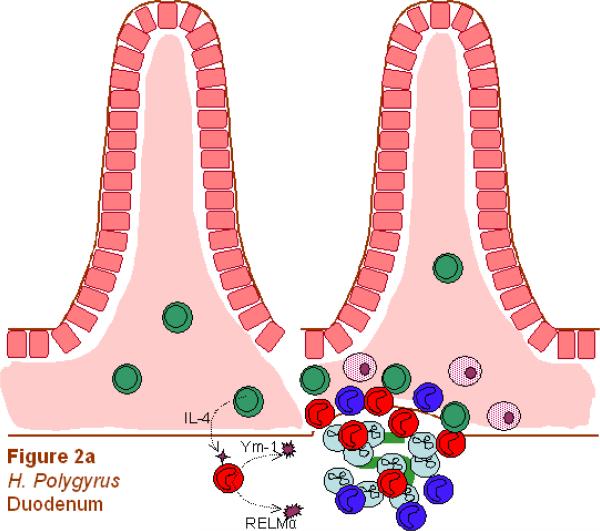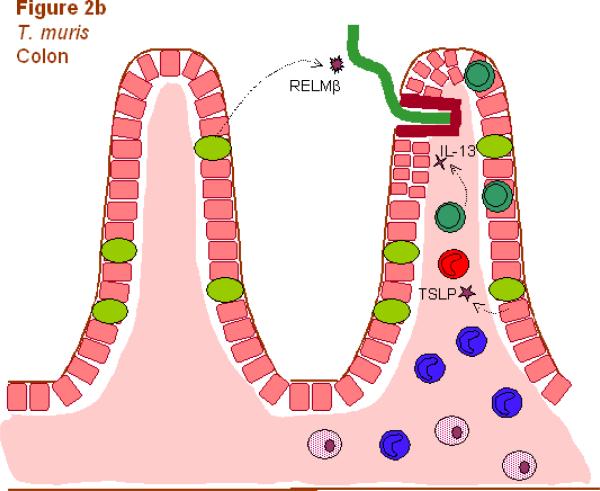Fig. 2.
Different components of the Th2-type response are effective against different helminthic parasites. Responses involve Th2 cells (dark green), neutrophils (light blue), macrophages (dark blue), alternatively activated macrophages (AAMacs; red), eosinophils (purple), goblet cells (light green), epithelial cells (pink), epithelial syncytium (maroon), mast cells (orange) and secreted factors. (A) The localized memory response to the Heligmosomoides polygyrus tissue-dwelling larva is characterized by AAMacs. AAMac-mediated protection is arginase-dependent and includes secretion of the chitinase-like protein Ym-1 and resistin-like molecule α (RELMα). (B) An IL-13-dependent “epithelial escalator” uses increased cell turnover to displace the burrowing head of Trichuris muris. Epithelial cell thymic stromal lymphopoietin (TSLP) may stimulate Th2 responses and inhibit Th1-type inflammatory responses, and goblet cell resistin-like molecule β (RELMβ) may bind the worm. Eosinophils accumulate in the lamina propria but are not required for parasite expulsion. (C) Th2 cytokines induce mast cell protease 1 (mMCP-1) which disrupts epithelial cell tight junctions, and goblet cell hyperplasia, together creating a “leaky” gut environment that favors expulsion of Trichinella spiralis from the syncytium of epithelial cells where it rapidly matures and reproduces.



